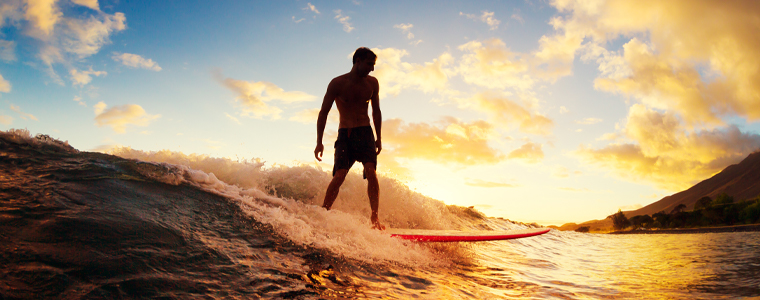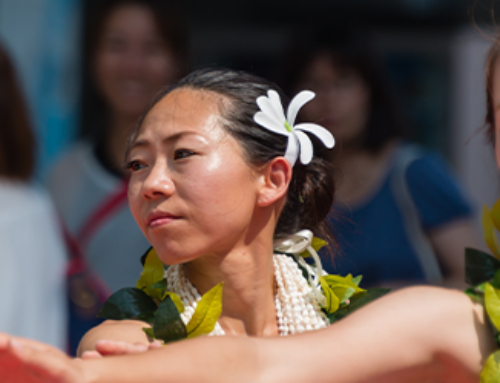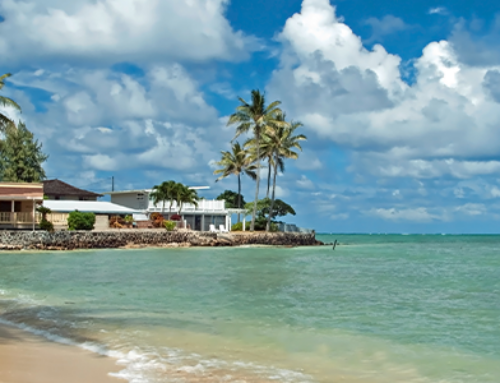Hawaii is well-known for many great things: breathtaking land and seascapes, delicious meals and traditional dancing at luaus, and, of course—surfing. In honor of Hawaii’s most famous pastime, Royal Hawaiian Movers explores how surfing has changed over the years in the Aloha State.
Cook and the Missionaries
It must have been quite a sight for Captain James Cook and his crew when they arrived in the Hawaiian Islands in 1778. Upon landing on Kauai, Cook and his men witnessed the native Hawaiians riding waves on long, heavy wooden boards in prone positions. After witnessing this spectacle, even Cook himself admitted, “I could not help concluding that this man felt the most supreme pleasure while he was driven on so fast and so smoothly by the sea.”
Despite this fascination with wave riding, the arrival of Captain Cook marked the beginning of the end for many ancient Polynesian traditions and customs, including surfing. Unfortunately, when Calvinist missionaries arrived in 1820, their stringent religious philosophy and teachings were in direct conflict with many of the native customs that had been practiced for centuries. In the quest to convert souls, the Calvinists (and eventually, missionaries from other religious sects) began to insist that native Hawaiians wear more clothes, work more, and play less.
“Play” included the act of surfing, and for the rest of the nineteenth century it saw a sharp and dramatic decline.
Duke and the Spreading of Aloha
The rebirth of surfing in Hawaii was lead primarily by Waikiki surfer, swimmer, and waterman Duke Kahanamoku. Duke’s place at the top of Hawaiian surfing history is unrivaled, but it was his swimming abilities that first gained him notoriety.
He set multiple world records between 1910 and 1920, and took home multiple medals at the 1912, 1920, 1924, and 1932 Olympic Games. Because of his charisma, surfing skill, and flair of showmanship, Duke was instrumental in spreading the sport of surfing to other countries. His wave-riding exhibitions in places like California, New Zealand, and Australia planted the seed of surfing culture, earning him the title “father of international surfing.” Duke’s aquatic exploits influenced many of surfing’s earliest pioneers, including Tom Blake, Don Hemmings, Butch Van Artsdale, and Paul Strauch.
In 1965, Duke became the first person to be inducted into both the International Swimming Hall of Fame and the International Surfing Hall of Fame. Even after his death in 1968, Duke’s legacy and impact on the surfing world continued to earn him honors such as his induction into the U.S. Olympic Hall of Fame in 1984, the construction of an iconic bronze statue at Waikiki beach in 1990, being named ‘Surfer of the Century’ by Surfer magazine in 1999, and his own commemorative postage stamp in 2002.
Bustin’ Down the Door
In the mid-to-late 1970s, surfers from California, South Africa, Australia, and other parts of the world began moving to Hawaii each winter. Among these visiting surfers to Oahu’s North Shore were Australians Wayne “Rabbit” Bartholomew, Ian Cairns, Peter Townend, and Mark Richards and South Africans Michael and Shaun Tomson. This group of expat surfers arrived on the North Shore each season with something to prove, challenging the old surfing guard that had been established and upheld by Hawaiian surfing legends like Eddie Aikau, Barry Kanaiaupuni, and Jeff Hakman. In 1976, Rabbit Bartholomew wrote an article in Surfer magazine, Bustin’ Down the Door, which caused some hard feelings among the Hawaiian surfing contingency.
The clash between local Hawaiians and the visiting Australian and South African surfers in the aftermath of Rabbit’s article was the subject of the 2008 documentary film, Bustin’ Down the Door. The film chronicles the conflicts between the groups, and how the revolutionary surfing that took place on the North Shore during this period paved the way for future surfers to earn a living riding waves—and laid the foundation for what is now the Association of Surfing Professionals.
Hawaii’s Place in Surfing Today
The Hawaiian Islands are undoubtedly one of the world’s most wave-rich regions. The North Shore of Oahu is particularly packed with world-class surf breaks, where surfers will find legendary spots like Pipeline, Backdoor, and Off-the-Wall in a famous stretch known as the ‘Seven-Mile Miracle.’
Pipeline holds a special place in surfing as one of the most perfect left-breaking tubes in the world, and each year the ASP World Tour ends its season with the Billabong Pipeline Masters contest.
Hawaii is also home to some of the largest and most dangerous waves on the planet, including Sunset Beach, Waimea Bay, and Jaws. As they have done for decades, surfers from all over the globe descend on Hawaii’s beaches each winter in order to test their skill at some of the most challenging surf spots in the world.
The face of surfing changed dramatically with the coming of European ships, but this sacred Hawaiian sport made a huge comeback in the 20th century and is going stronger than ever to this day. A hui hou kakou—until next time—we hope you enjoyed this history of our state’s most beloved sport.



